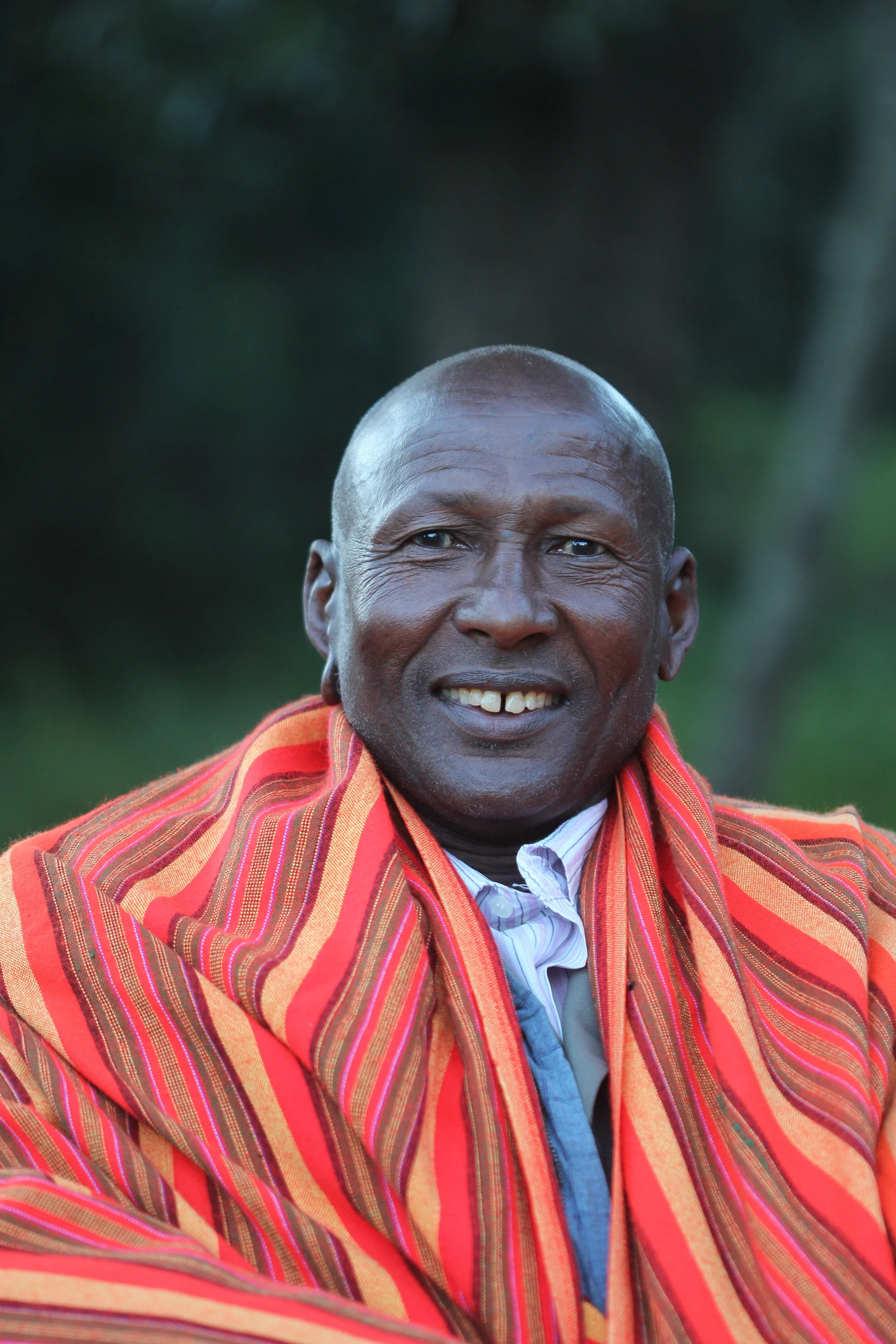La Chaleur Humaine - Part 1
By Robin Huffman, Safina Center Fellow
William Njapit. Photo: Robin Huffman
My phone rang in the middle of the night a couple of weeks ago. It was my friend William Njapit in Kenya. He’s a Maasai elder now, living in a hut on the Maasai Mara with his family and a herd of goats. Thirty years ago we’d worked together building our friend Nick’s safari camp on the Mara. When I returned two years ago, Nick summoned all the old Maasai warriors we’d worked with, celebrating with a four-day reunion at the camp. It was pretty glorious. Anyway, William was now calling me to make sure I was safe, because America is such a dangerous place.
Nixon with his nursery chimp gang in Cameroon. Photo: Robin Huffman
That same week, I had another interchange. I was on Facebook when a message popped up from my buddy Nixon, a congenial, philosophical Cameroonian who’s a chimp caregiver at Ape Action Africa primate sanctuary in the rainforest. He announced, “Great news!” I wondered whether he’d had a new grandchild, or there was a successful monkey release into the wild, or his living quarters upgraded. I wrote back, “What’s up?” His answer, “My man Joe won!”
The world is watching—even from places and people we might not expect—and they are paying attention. We may sometimes forget that, tending towards an egocentric view of our own lives in America.
I was impressed and felt bathed in warmth from these outreaches, and it led me to reflecting on the charming moments I’ve experienced from almost four decades of traveling to developing nations (they are NOT “sh*@hole”countries, as one person infamously declared. Far from it). My memories of these interactions are like a treasure trove of jewels…different cuts and colors, but all sparkling and precious. Here are a few of my favorites:
Touring the stark beauty of Dogon Country in Mali, we were surprised to see a field of succulent watermelons being grown in that arid terrain. The farmer offered us one as a gift. Our guide said the gesture illustrated what they call la chaleur humaine…human warmth.
I visited a school in that area as well, distributing inflatable globes. And it occurred to me that those children, in that most rudimentary setting, knew where the United States was on the globe. But I’ll bet if I polled a thousand Americans, I’d be lucky if even one could point out where Mali is. Maybe I should be bringing globes to schoolchildren in the U.S.
I made friends with a Kenyan architect, Ruben, at a design conference in Chicago. He’s of the Kamba tribe. We met up again while I was in Kenya building the safari camp. Upon my telling him of an exciting job offer, Ruben earnestly responded, “Then you know what I will do for you? I will get down on my knees and I will pray for you, that you have this opportunity!”
He and his wife later asked me to become their second wife, but that’s another story….
Read Part 2 of this blog here.


